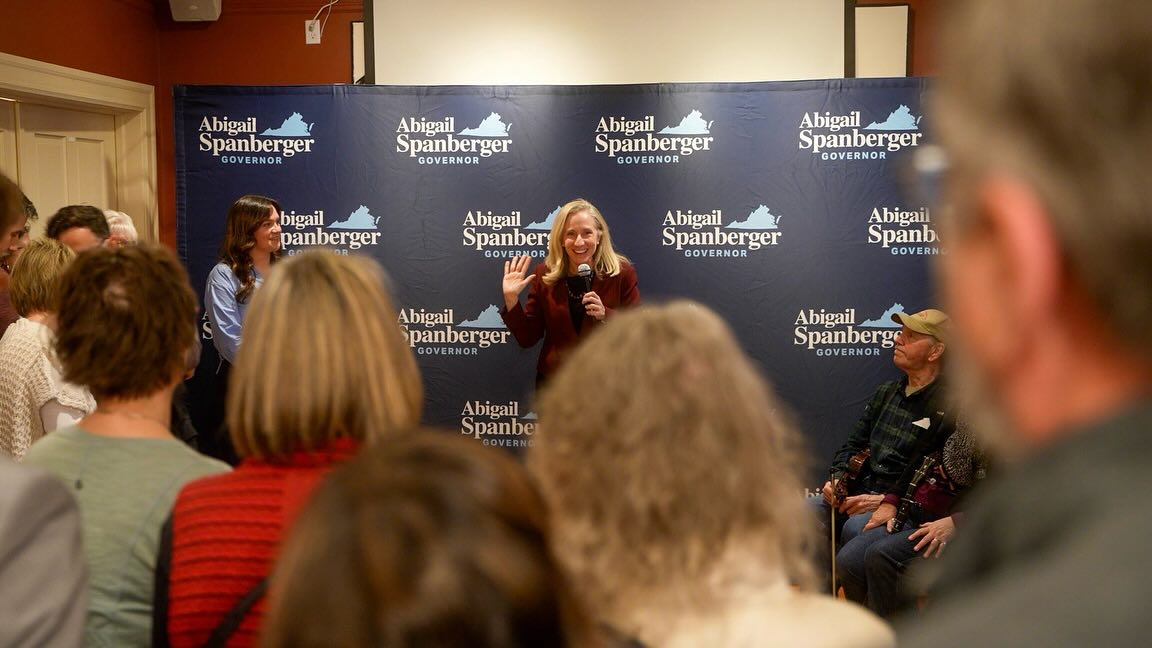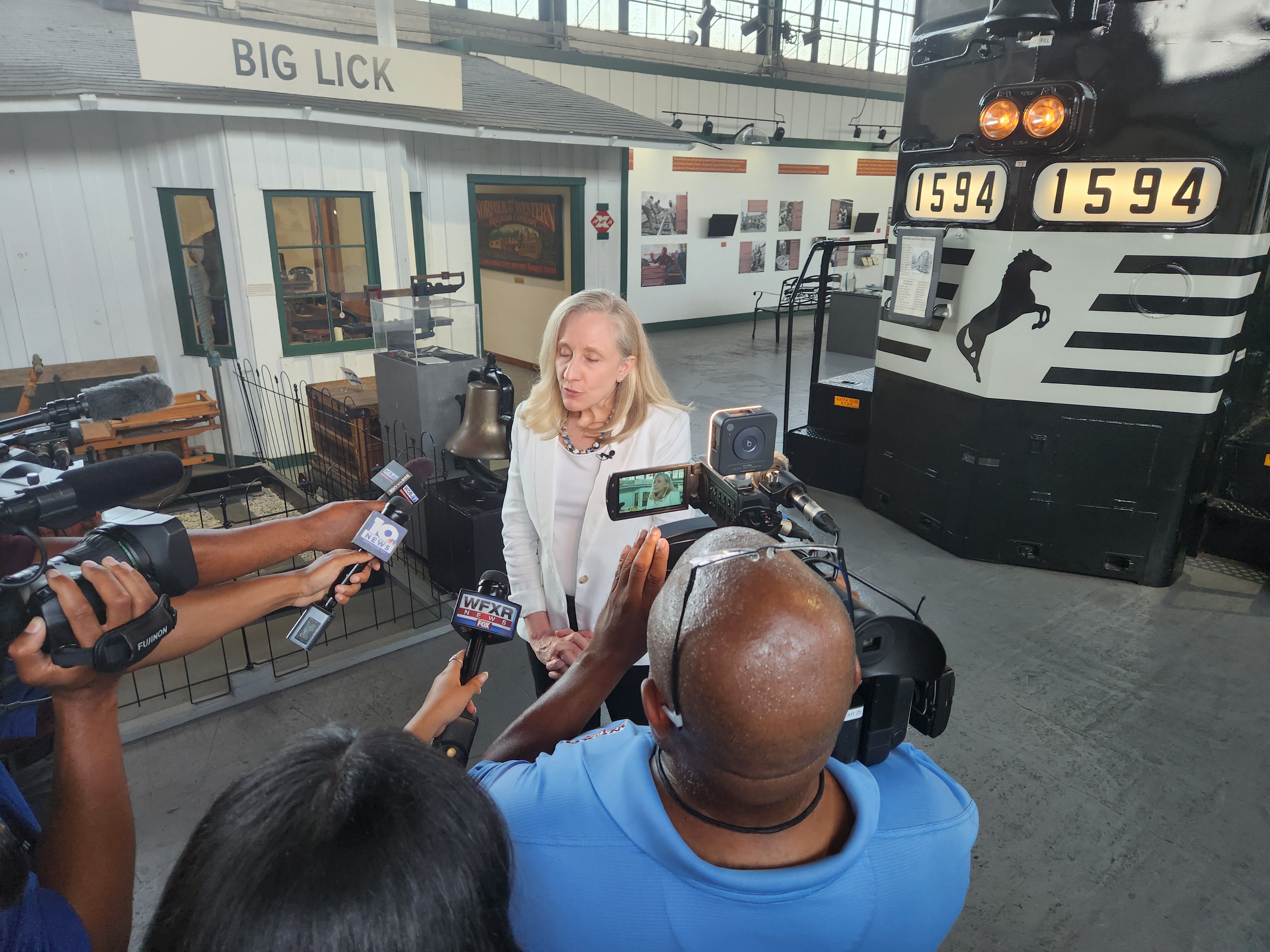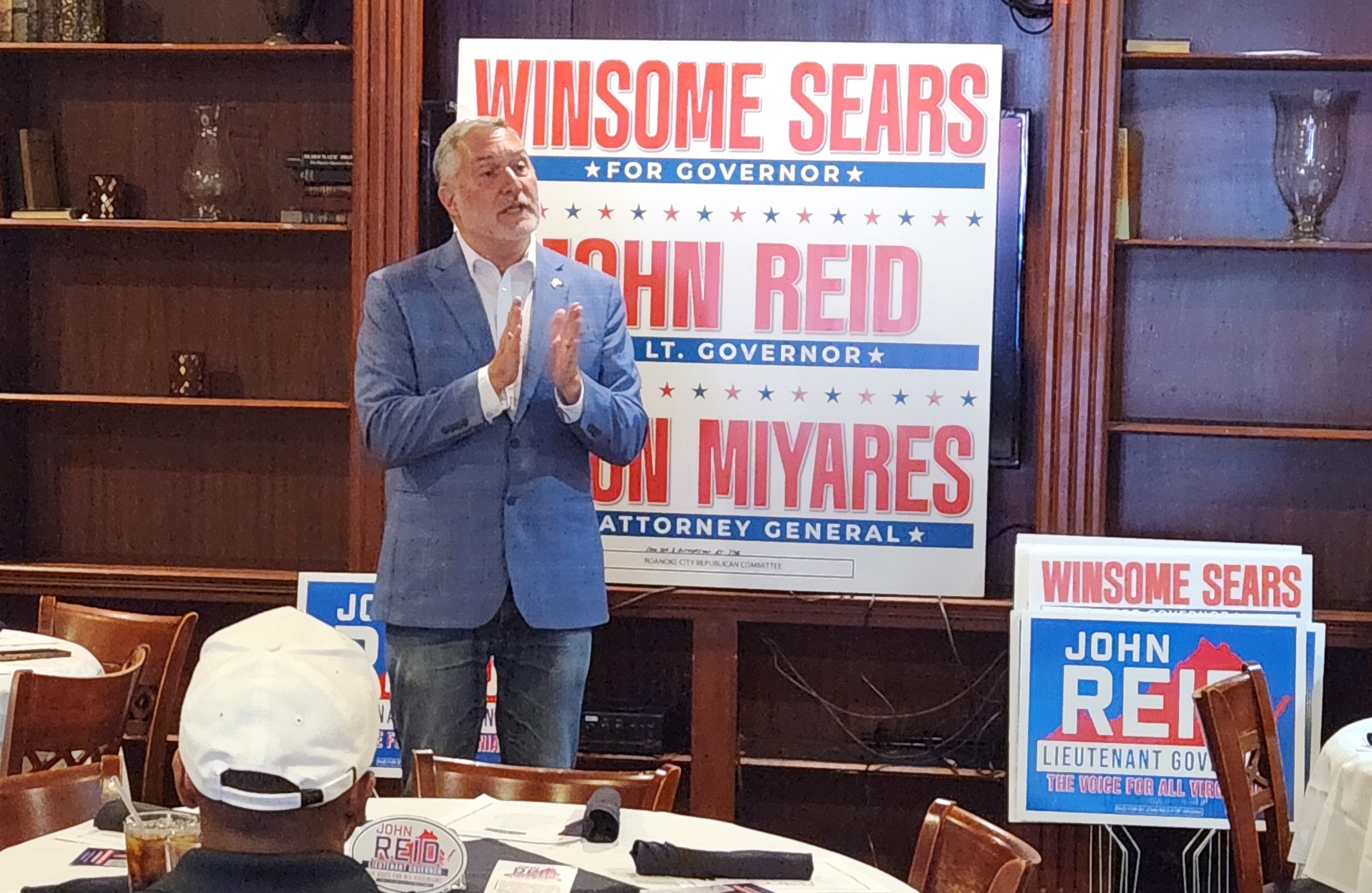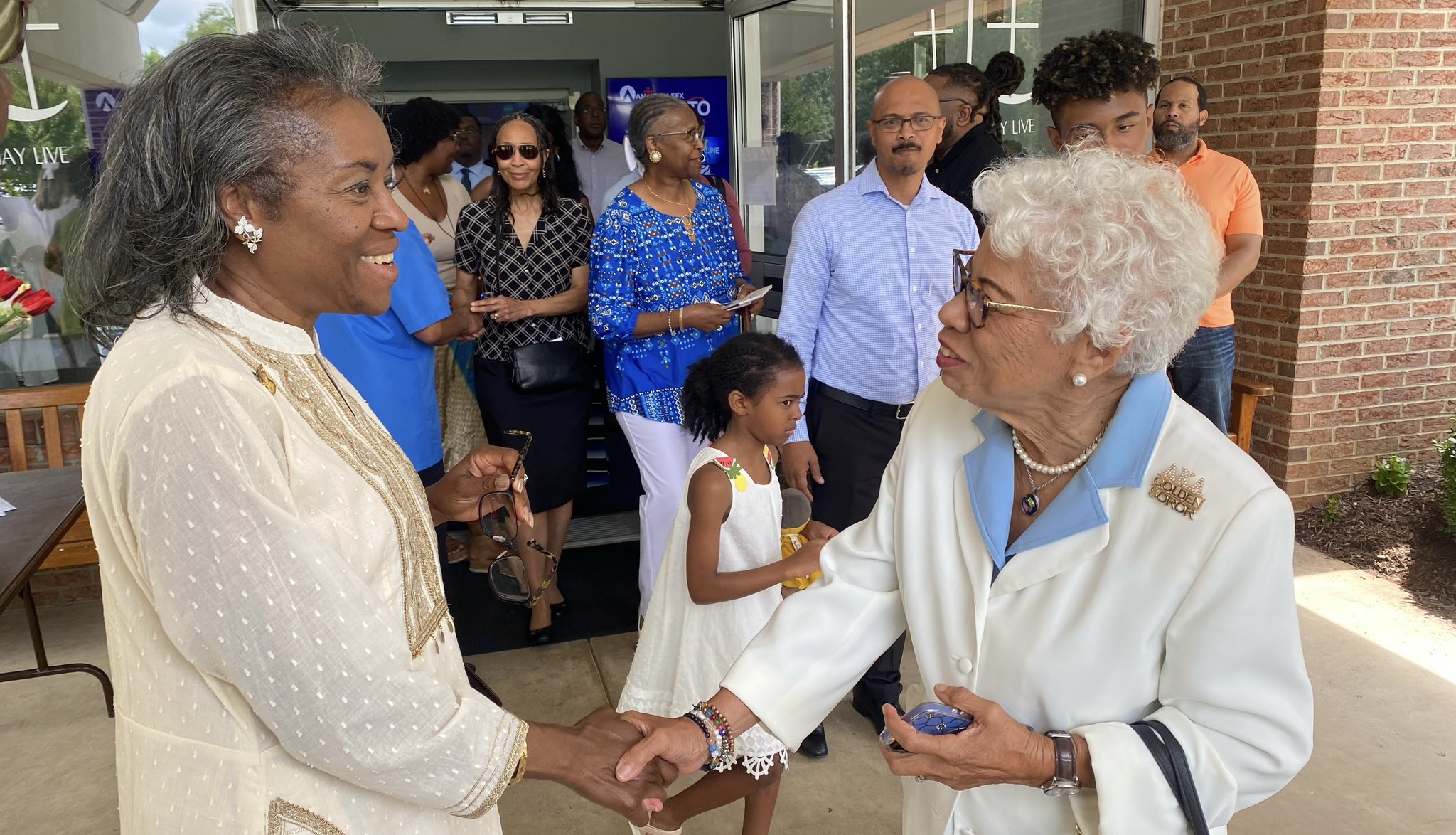We are now five weeks away from the start of early voting on Sept. 19.
In terms of the “old” election calendar, where there was only one day of voting and not an entire season, it’s now late September, not mid-August. That seems a good time to check in on the governor’s race —
A special announcement
We interrupt this column to bring you an update on our Voter Guide. We’ve now created individual pages for every county and city in the state, and these pages list every election on the ballot this fall. That means you can look up your locality and see what offices you’ll be voting on — most places are voting on some local offices, as well.
We also sent questionnaires to all the statewide candidates (in May), all the House of Delegates candidates across the state (in July) and all the local candidates in Southwest and Southside (also in July). This weekend, we’ll be uploading all those responses (or, in some cases, lack thereof) to the Voter Guide. It’s not too late for candidates to reply, but we are about to go live with the ones we have. We’re pleased to report that both candidates for governor have responded. You can get a sneak peek at Charles City County and Powhatan County because all the candidates there have already responded.
Candidates: We’ve sent these questionnaires (and reminders) to the official email address on file for our campaign with the State Board of Elections. If you want us to send it elsewhere, just let us know at elections@cardinalnews.org.
We now return you to your regularly scheduled column, already in progress.
— and that’s just how I feel about that. With that out of the way, let’s look at some questions, the answers to which will shape the rest of the campaign.
1. Can Earle-Sears get out from under a drumbeat of bad news?

Winsome Earle-Sears, the Republican candidate for governor, was strangely silent for much of the spring and summer. She wasn’t doing interviews, except on “safe” conservative platforms. She wasn’t issuing policy statements. She passed up invites to debate her rival (so did Democrat Abigail Spanberger, but we’ll get to that). Earle-Sears, a former Marine, has likened her campaign to a military operation, but, in military terms, she’s been AWOL for much of the year.
Earle-Sears has now changed campaign managers and adopted a higher profile — I was promised a 15-minute interview on energy but got 40 minutes instead. However, not all of that higher profile has been helpful. She went on CNN and wound up in a contentious interview about federal job cuts, which the Spanberger campaign promptly turned into an ad. That appearance wound up being a net minus for Earle-Sears.
Most recently, the Virginia Police Benevolent Association, which four years ago endorsed Earle-Sears for lieutenant governor, is now backing Spanberger. Earle-Sears needs to make more headlines, but right now, most of the headlines she’s making aren’t flattering ones. She’s also still making up for lost ground, organizationally. For instance, she still hasn’t met with the pro-business group Virginia FREE, which you’d think would be a must for any Republican candidate for governor.
2. Can Spanberger continue to coast?

Spanberger has done a great job of saying as little as possible — and why should she? Polls show she’s ahead. She’s also running against President Donald Trump in a state he lost three times. The political playing field favors Democrats this year (another reason why Earle-Sears needs to step it up). No need to take risks. Spanberger has done the traditional things, things Earle-Sears hasn’t done, such as release regular policy statements. Those statements just haven’t been particularly detailed. The Richmond Times-Dispatch, in its coverage of Spanberger’s education plan, called her platform “light on specifics.” In sports terms, Spanberger is trying to run out the clock. Can she continue to do this all the way through to Nov. 4? Former Del. Chris Saxman, R-Staunton, who now heads the pro-business group Virginia FREE, recently called this the most boring campaign he’d ever seen. That may work to Spanberger’s advantage at this point.
3. Will we see any debates?

Both candidates passed up the traditional July debate before the Virginia Bar Association. That fits Spanberger’s approach; it makes no sense for Earle-Sears, who needs to do something to knock Spanberger off-balance. The Appalachian School of Law, Cardinal News and PBS Appalachia have joined together to propose a debate in Bristol; neither campaign has responded. Spanberger accepted the People’s Debate sponsored by AARP; Earle-Sears declined. This week, Earle-Sears has accepted an offer for a CNN debate; Spanberger on Thursday declined, with her campaign saying it wanted “to prioritize Virginia broadcasters and ensure the focus remains squarely on issues impacting Virginia.” Spanberger’s campaign said it was “in active negotiations” with WAVY-TV in Hampton Roads and Norfolk State University about a debate. It’s unclear to me how much either candidate really wants to debate. In any case, it’s looking like we might have one debate at most, or possibly none at all. Either way, that would be breaking a three-cycle tradition (2013, 2017 and 2021) of holding a debate in Southwest Virginia.
4. Will Earle-Sears be able to raise more money?
The most recent campaign finance report, which counted dollars through June 30, showed Spanberger with more than three times as much cash in the bank as Earle-Sears. This is a cash advantage that may be unprecedented in recent times.
Earle-Sears simply doesn’t have much money for a modern governor’s race in Virginia. To put this in more perspective, Attorney General Jason Miyares had more money in the bank than Earle-Sears. While money alone doesn’t win a campaign, not having the financial resources to compete sure hurts. The logical way for Earle-Sears to raise a lot of money quickly would be if national Republican groups turned on a financial spigot on her behalf. The challenge is that political money is often ruthlessly practical: If those groups don’t think Earle-Sears can win, they won’t invest. The Associated Press recently pointed out this painful disparity: The Republican Governors Association has given Earle-Sears $500,000. Four years ago at this time, though, it had given Youngkin more than $2 million.
Financially, Earle-Sears’ competition may not be Spanberger but her Republican counterpart in the New Jersey governor’s race, the only other big race this year. That ought to be a Democratic lock but isn’t; polls show Democrat Mikie Sherrill with only a single-digit lead over Republican Jack Ciattarelli. If Republicans decide that’s the wiser investment, Earle-Sears could find herself starved for funds.
Another wild card: California Gov. Gavin Newsom’s push for a special election to allow California Democrats to gerrymander that state’s congressional maps to counter what Republicans are trying to do in Texas. If that winds up on the California ballot, a lot of national Republican money could wind up going there to try to defeat it: Preventing five new Democratic seats in the House, and the prospect of a Democratic takeover of that chamber, would be more important to them than a governor in Virginia. Since Newsom is reacting to what Texas Republicans are trying to do, you could say that Texas Republicans are distracting attention, and potentially money, from Earle-Sears’ campaign.
5. Can Earle-Sears make anything stick to Spanberger?

We’re at the stage of the campaign where both sides are reaching for whatever dirt they can throw in hopes that something sticks. Democrats have raised questions about whether Earle-Sears properly reported a plane ride from a donor. Republicans have tried to hit Spanberger with taking $50,000 from a Chinese businessman who they say has ties to the Communist Party (he also donated to Republicans) and trying to get Spanberger to comment on Del. Sam Rasoul, D-Roanoke, calling Zionism “evil.” I’m not sure any of this really matters to voters, but we’ll see. To me, all this kind of back-and-forth simply highlights how neither side is really talking much about policy. I remember olden times when George Allen ran on a platform of abolishing parole and Jim Gilmore wanted to do away with the car tax. Those were meaty positions that you could chew on and argue pro and con. None of this is.
6. Can Earle-Sears find a more empathetic answer on federal job cuts?

Earle-Sears is admittedly in a bind. Trump’s cuts to the federal workforce are roiling Northern Virginia and run the risk of motivating Democratic voters. Earle-Sears’ approach so far has been to dismiss the impact of those cuts and say they’re not “the real issue.” That’s probably not the best approach because it doesn’t seem empathetic and could further fuel outrage in a place with a lot of potential Democratic voters. I wrote a column recently about how John Reid, the Republican candidate for lieutenant governor, has a much more politically appealing way to talk about a dicey subject for his party.
7. Can Earle-Sears make inroads with Black voters?

I hate to make this all about Earle-Sears, but since Spanberger leads in the polls, it’s on Earle-Sears to disrupt that pattern. Back to our sports metaphor around Spanberger running out the clock: Earle-Sears needs to force a turnover. One way she could do that is not through an issue, but through demographics. Trump made gains with Black voters; the Pew Research Center says that while 8% of Black voters backed him in 2020, 15% did in 2024. The biggest shift came among Black men; Trump took 21% of their votes.
We know three things. First, Spanberger’s connections to Black legislators started off cool; there was some sentiment about recruiting Rep. Bobby Scott to challenge her for the nomination. Second, Earle-Sears has spent a lot of time visiting Black churches. Third, I couldn’t help but notice that when Spanberger held her first post-primary rally in Roanoke, a city that’s 27% Black, the crowd was almost exclusively white.
There is a school of thought among some Republicans that goes like this: Democrats aren’t really in love with Spanberger, they just don’t like Trump — and while that may activate some voters, it won’t really energize swing voters, who might just stay home. Meanwhile, if Earle-Sears can get the Republican base vote plus a higher-than-usual share of the Black electorate, she could eke out a victory. Mathematically, that’s possible. Whether it works in reality, who knows yet? We do know that Spanberger is spending part of her cash hoard on digital audio ads that feature a Black man as narrator trashing Earle-Sears. That’s probably not an accidental choice.
8. What outside events could complicate the campaign?
Campaigns can often anticipate what the other side is going to do; the most unpredictable moments of a campaign sometimes come when an outside event happens that neither side can control. I had thought this spring’s Spanish blackout was a danger point for Democrats, if the official inquiry found that Spain’s reliance on renewable energy was to blame. However, the preliminary report doesn’t point in that direction; it deprives Republicans of one potential talking point.
Trump is always a wild card; everything he does risks inciting Democratic voters in Virginia. If tariffs drive up inflation, that could hurt Republicans and help Democrats. On the other hand, the reports — still unverified — that a Fairfax County school official might have helped at least one underage girl obtain an abortion could become a rallying point for Republicans. Youngkin this week ordered a state police investigation, which is one of those things that could be both wise and politically advantageous. The Loudoun County School Board this week voted to, as The Washington Post put it, “maintain its policies allowing transgender students to use facilities that match their gender identity, despite an order from the U.S. Department of Education to change the policy or risk punishment.” Whatever you think of the policy, it is not politically helpful to Democrats if transgender policies come to dominate the campaign — so look for Republicans to try to do just that. The Loudoun school board may have stood by its transgender students but didn’t do Spanberger any favors.
9. Will we see any move toward split-ticket voting?
I wrote earlier about how that’s fallen out of favor and how many votes it would take for, say, Miyares to win if Spanberger does. The Virginia Police Benevolent Association endorsed a split ticket: Spanberer for governor, then Reid for lieutenant governor and Miyares for attorney general. That’s just one group, but in an age of increased partisanship, a split endorsement is more noteworthy. Will we see other moves in this direction?
10. What will we start to see happen in House of Delegates races?
The statewide races aren’t the only ones on the ballot. So are all 100 House of Delegates seats, as well as many local offices. (You can find all these in our Voter Guide.) Democrats hold a 51-49 edge in the House. Democrats would obviously like to expand that majority; Republicans want to take it back. All these House candidates have to campaign within the environment that the statewide candidates help create. Who does that help? Who does that hurt? Who is able to withstand a political environment that’s helping the other side by running a more locally focused campaign?
We’ll know the answers to all these questions on the night of Nov. 4. For now, we just have questions.
Want more politics? Sign up for West of the Capital, our weekly political newsletter:



